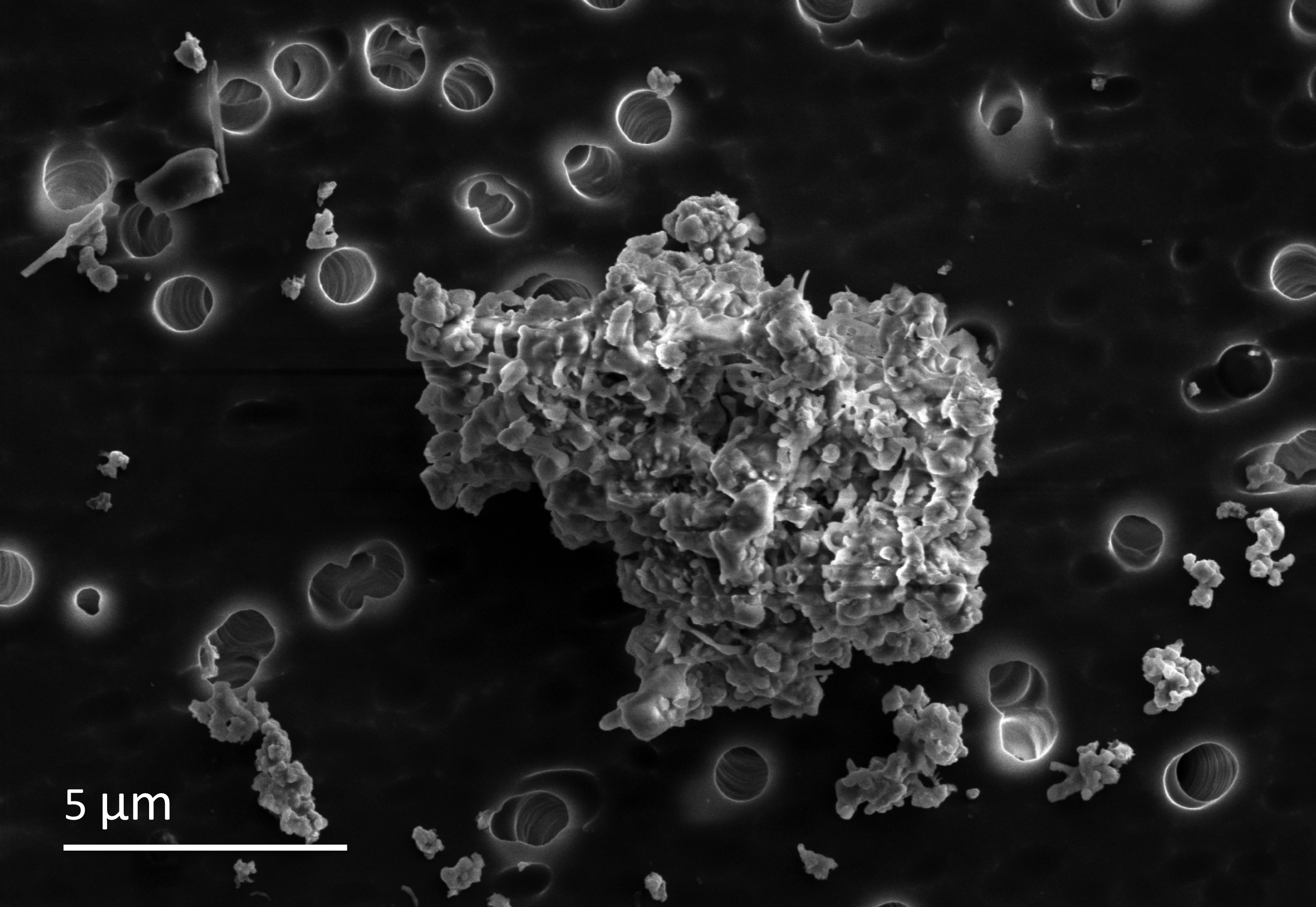SCIENTIFIC ACHIEVEMENT
In comet dust, researchers discovered composite organic-inorganic mineral grains that are likely to be the original “bricks and mortar” of the solar system.
SIGNIFICANCE AND IMPACT
“Forensic” samples preserved from the birth of the solar system allow investigations into the nature of the atomic and molecular ancestry of the terrestrial planets and life on Earth.

Origins of the solar system
A fundamental goal of the study of primitive extraterrestrial material is to better understand the nature of the original stuff of the solar system. Interplanetary dust particles (IDPs) collected in the stratosphere are the most likely repository of such material because they come from comets, small bodies that accreted beyond the giant planets and that have remained cryogenically frozen since solar system formation.
In 1994, IDPs were found to contain tiny grains of glass with embedded metal and sulfides (GEMS). The remarkable similarity between the properties of GEMS and interstellar dust suggested that GEMS are the long-sought primordial materials—dust grains formed in situ in the cold (below 100 K) interstellar medium that were subsequently incorporated into the embryonic solar nebula. However, in 2011, a very different origin was proposed for most GEMS: that they formed not in the cold interstellar medium but in the hot (over 1300 K) inner solar nebula during planet formation.
Analysis of natural nanomaterials
In this work, researchers further investigated the origin of GEMS in IDPs by examining them at unprecedented spatial scales and sensitivity. IDPs, and GEMS in particular, are natural nanomaterials, the most finely grained and heterogeneous (compositionally and structurally) natural materials ever encountered. Assessing the distribution of organic constituents and determining the nature of their chemistry required the use of microbeam and nanobeam techniques.
At ALS Beamline 1.4, the researchers obtained Fourier-transform infrared (FTIR) spectra with diffraction-limited spatial resolution. This synchrotron-based infrared source provided a sufficient signal-to-noise ratio to enable identification of the organic chemistry of thin sections of IDPs only about 100 nm thick. The FTIR identifications were complemented by energy-dispersive x-ray spectroscopy and electron energy loss spectroscopy in transmission electron microscopy (TEM) studies at Berkeley Lab’s Molecular Foundry and at the University of Hawai‘i at Mānoa. The TEM studies provided nanoscale compositional maps and spectroscopy, vital to characterizing these fine-grained materials.

Discovery of organic carbon within GEMS
GEMS had long been considered to contain only inorganic (mineral) constituents, but this work revealed that they also contain organic carbon. Although such organic-inorganic composite grains had not previously been observed in extraterrestrial materials, recent models of dust in the interstellar medium have found that organic-inorganic composite grains can provide a better match to astronomical observations of contemporary interstellar dust. The results also show that there is a core-mantle relationship between the inorganic and organic components within GEMS. The organic mantles appear to have facilitated grain aggregation (like mortar), the critical process in building planetesimals from dust grains (the “bricks”).
Finally, since the (nitrogen-rich) organic carbon discovered in GEMS forms at very low temperatures (below 100 K), the results rule out the formation of GEMS in the hot, inner solar nebula during planet formation. The researchers propose that GEMS represent dust that has experienced varying degrees of cyclical processing by passing in and out of cold, dense clouds in the interstellar medium before ending up in the cold, dense cloud that became our solar system.
Because IDPs were the major source of organic matter for the early (pre-biotic) Earth, the researchers’ future plans are focused on better understanding the nature of the organic compounds they contain, particularly the heterocyclic compounds relevant to biology.

Contacts: Hope Ishii and John Bradley
Researchers: H.A. Ishii and J.P. Bradley (University of Hawai‘i at Mānoa), H.A. Bechtel (ALS), D.E. Brownlee and D.J. Joswiak (University of Washington), K.C. Bustillo and J. Ciston (Berkeley Lab), J.N. Cuzzi (NASA Ames Research Center), and C. Floss (Washington University).
Funding: National Aeronautics and Space Administration. Operation of the ALS is supported by the U.S. Department of Energy, Office of Science, Basic Energy Sciences Program (DOE BES).
Publication: H.A. Ishii, J.P. Bradley, H.A. Bechtel, D.E. Brownlee, K.C. Bustillo, J. Ciston, J.N. Cuzzi, C. Floss, and D.J. Joswiak, “Multiple generations of grain aggregation in different environments preceded solar system body formation,” PNAS 115, 6608 (2018), doi:10.1073/pnas.1720167115.
See also the Berkeley Lab news release, “Experiments at Berkeley Lab Help Trace Interstellar Dust Back to Solar System’s Formation.”
ALS SCIENCE HIGHLIGHT #383